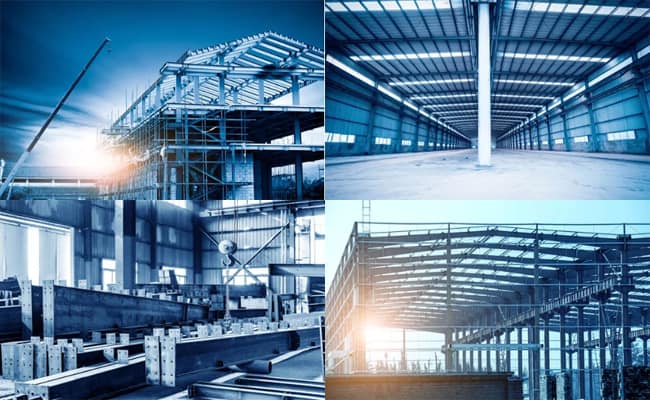In the construction of modern storage facilities, steel structure warehouses have become one of the mainstream building forms due to…
Due to its excellent physical properties, steel structure buildings can provide high earthquake and wind resistance, showing promising results in resisting natural disasters. The following will discuss the resistance of steel structure buildings in detail regarding earthquake resistance, wind resistance, and other natural disasters.
Characteristics of steel structures
1. The material has high strength and is lightweight.
Steel has high strength and high elastic modulus. Compared with concrete and wood, the ratio of its density to yield strength is relatively low. Therefore, under the same stress conditions, the steel structure has a small component section, is lightweight, easy to transport and install, and suitable for large spans, high heights, and heavy loads. Structure.
2. Steel has toughness, good plasticity, uniform material, and high structural reliability.
Steel is characterized by high strength, lightweight, good overall stiffness, and strong resistance to deformation, so it is particularly suitable for constructing large-span, ultra-high, and ultra-heavy buildings.
It can withstand impact and dynamic loads and has good seismic resistance. The internal structure of steel is uniform and close to an isotropic homogeneous body. The actual working performance of the steel structure is relatively consistent with the calculation theory. Therefore, the steel structure has high reliability.
The material has good homogeneity and isotropy and is ideally elastic. It is a solid body that aligns most with the basic assumptions of general engineering mechanics.
The material has good plasticity and toughness and can withstand dynamic loads well; the construction period is short; it has a high degree of industrialization and can carry out specialized production with a high degree of mechanization.

Resistance of steel structure buildings
1. Resistance of steel structure buildings: good earthquake resistance.
Due to steel’s high strength and toughness, steel structure buildings can resist natural disasters such as earthquakes better. During the design and construction of steel structure buildings, different anti-seismic measures can be adopted according to the regional seismic activity and building needs, such as increasing the stiffness and stability of the structure, improving the strength and stiffness of the connections, etc., thereby improving the overall seismic resistance of the structure.
2. The resistance of steel structure buildings: good wind resistance.
Wind is another common natural hazard and an essential test for building construction. Steel has high strength and stiffness and can withstand sizeable external wind loads. Through reasonable structural design and strength calculation, steel structure buildings can maintain good stability when facing strong winds. In addition, due to its high stiffness and lightweight characteristics, steel structure buildings show good resistance to wind resonance and can reduce the impact of wind on the building structure.
In addition to earthquake and wind resistance, steel buildings can withstand other natural disasters to a certain extent. For example, in terms of flood resistance, steel has higher corrosion and weather resistance, which can reduce structural damage caused by contact with water. In addition, steel structure buildings can also be fireproof because steel is not easy to burn, which can effectively reduce the damage to buildings caused by fire.
There are still challenges and limitations in the resilience of steel buildings.
First, steel structure buildings’ design and construction requirements are high, and strict calculations and acceptance are required to ensure that their earthquake and wind resistance meet the criteria.
Secondly, steel structures may suffer partial damage or collapse when faced with natural solid disasters, especially extreme earthquakes and hurricanes.
Therefore, different factors must be considered according to specific circumstances during the design and construction process, such as geological conditions, climate environment, etc., to improve further resistance of steel structure buildings.
In conclusion
Due to its excellent physical properties, steel structure buildings can provide high earthquake resistance, wind resistance, and the ability to withstand other natural disasters to a certain extent. However, steel structures still have challenges and limitations when facing natural disasters. Therefore, various factors must be fully considered during the design and construction process to improve the resistance of steel structure buildings and ensure their safety and reliability.














